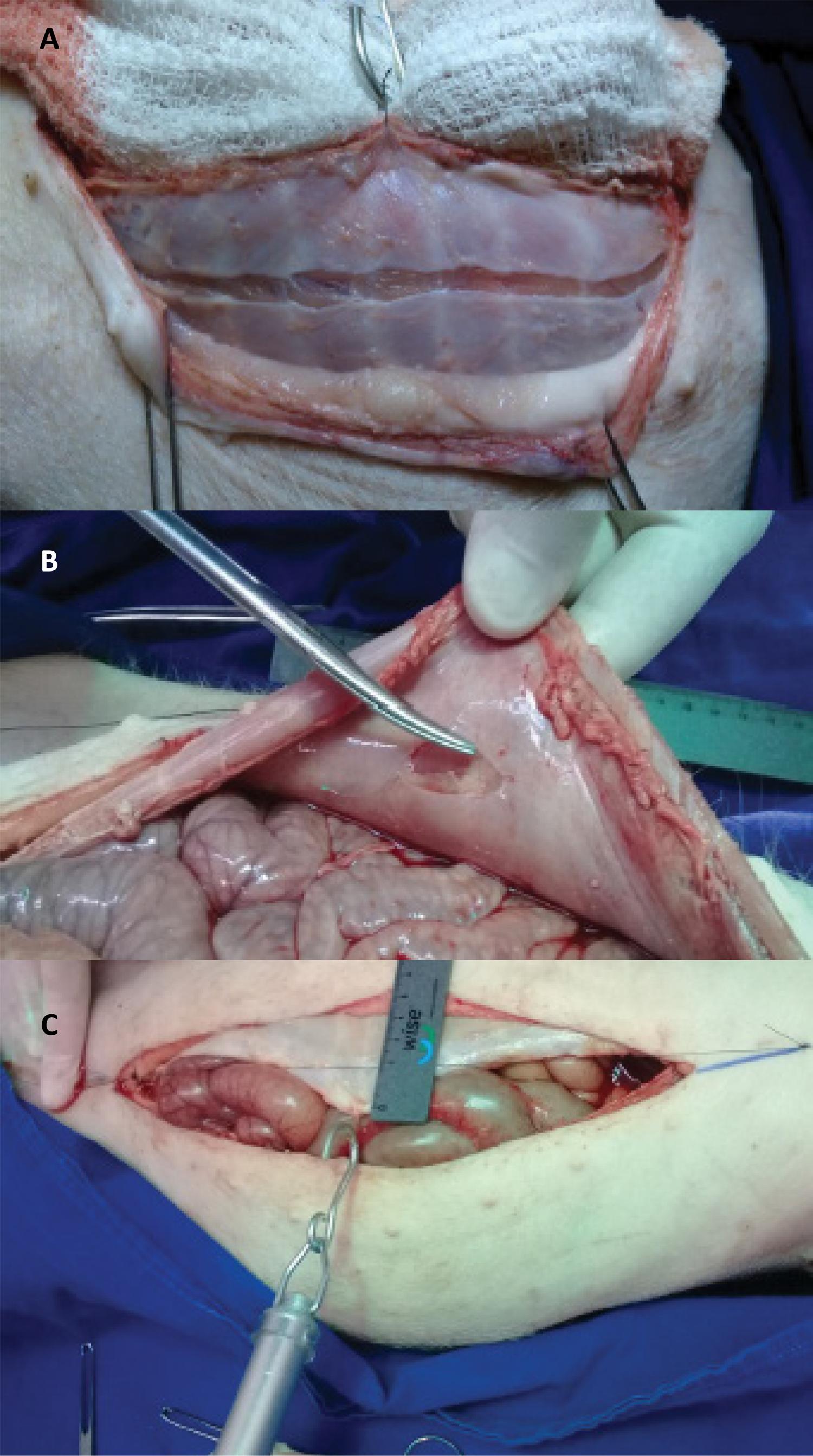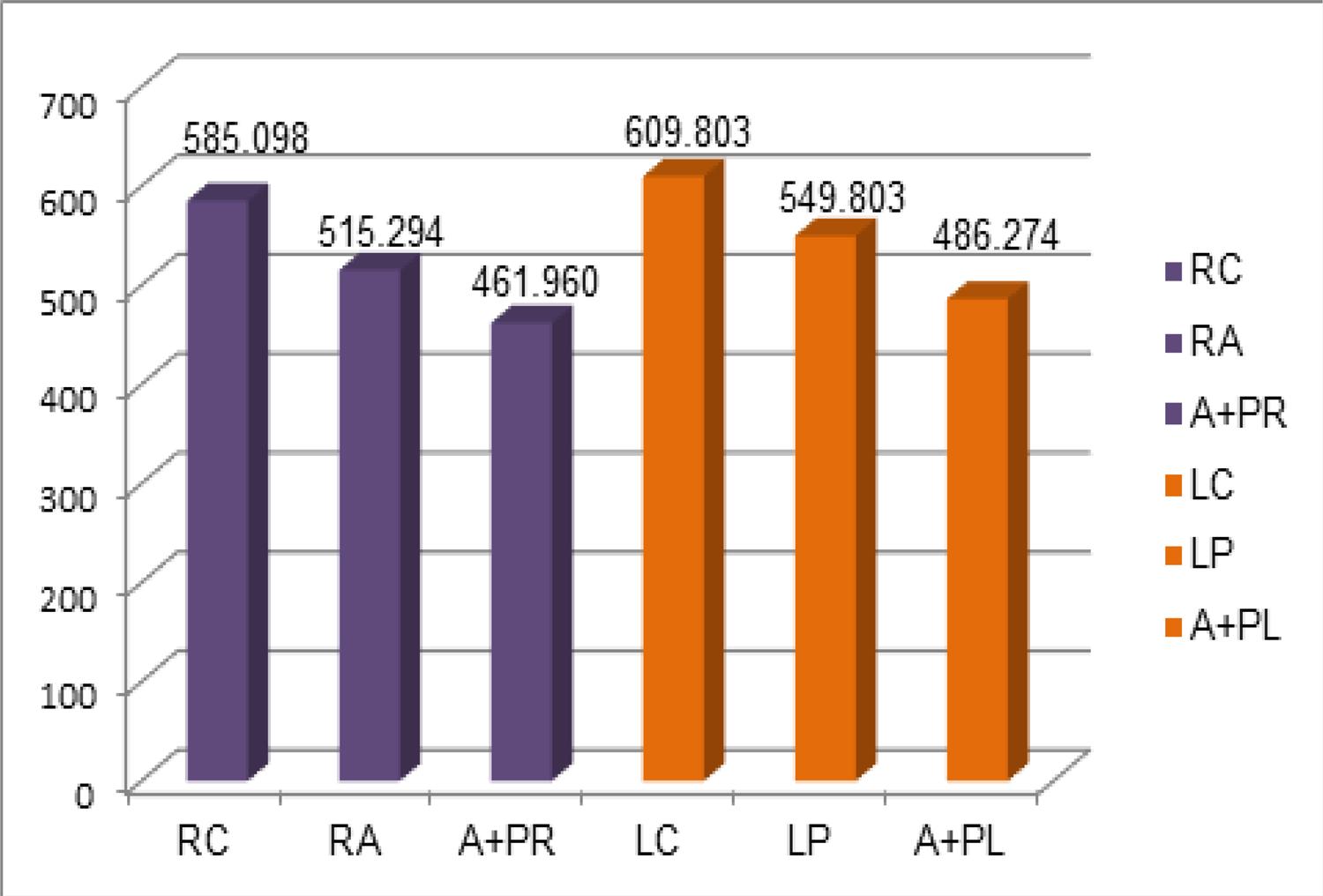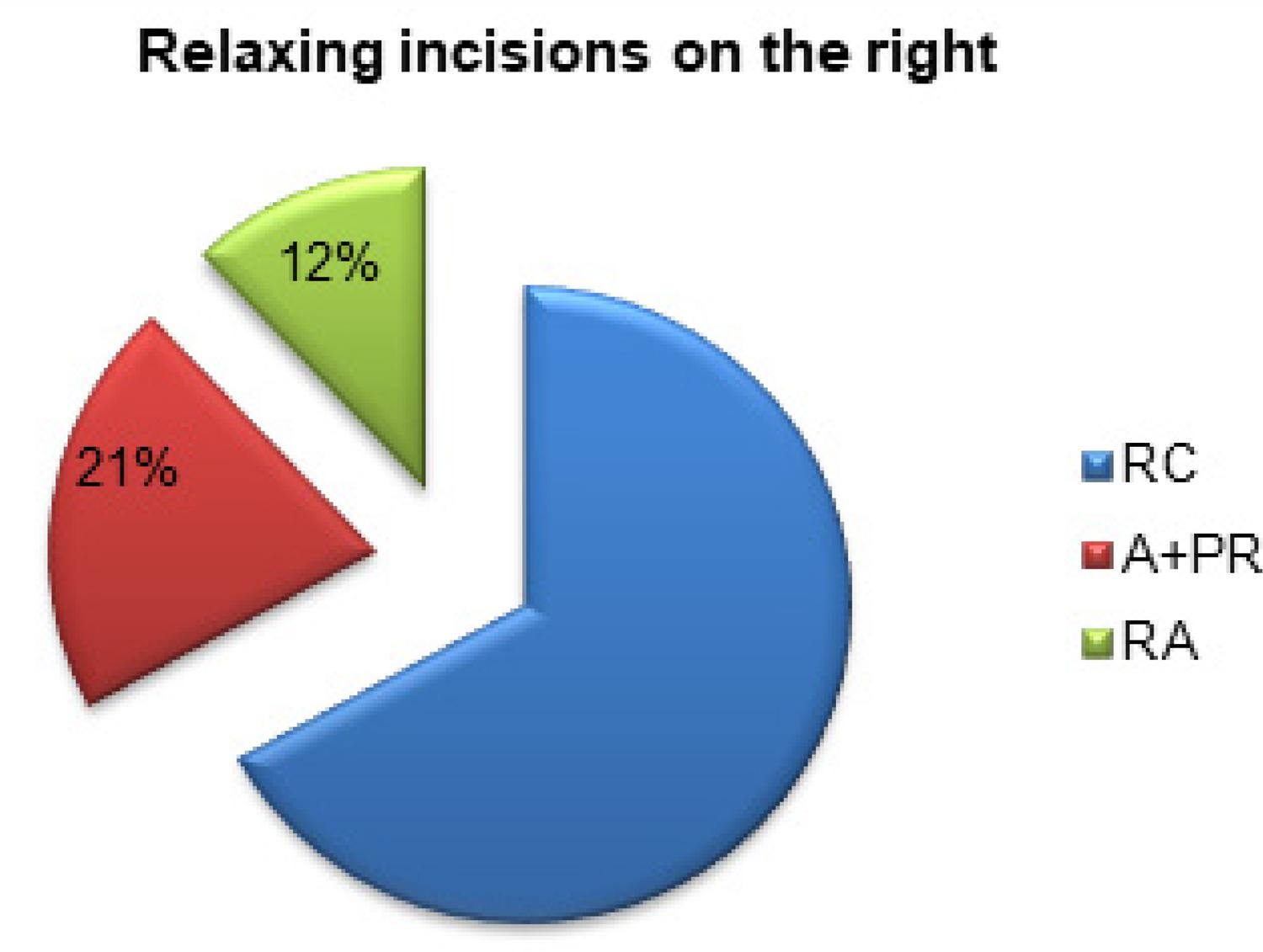Abstract
Purpose
To analyze the resistance to medial traction of abdominal wall muscles, before and after performing relaxing incisions.
Methods
Seventeen live pigs were used. After a median laparotomy, the handles were made in the rectus abdominis muscles (RAM) to fit the dynamometer. Step 1 (control phase): tensile strength measured without performing relaxant incisions. Step 2: A curvilinear relaxant incision was made on the anterior blade of the right RAM sheath and then the tensile strength was measured by the edge of the wound. The same procedure was adopted after incision of the left posterior blade. Step 3: Relaxing incisions were made in the right posterior and left anterior blade, so that both sides were left with a relaxing incision on both blades. Measurements of resistance were performed.
Results
There was no statistically significant difference between the sides. On the right and left side, all treatments reduced the tensile strength when compared to each other and to the control. There was a reduction of 12% and 9.8% after incision of the anterior and posterior blade, respectively.
Conclusion
Relaxing incisions reduced tensile strength in the ventral abdominal wall.
Incisional Hernia; Tensile Strength; Abdominal Wall; Swine






